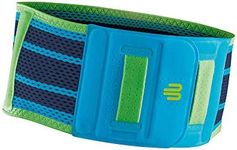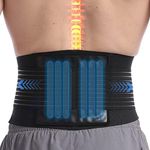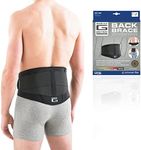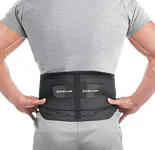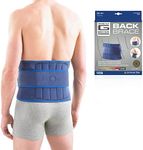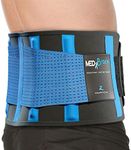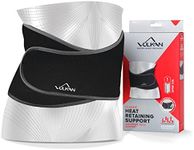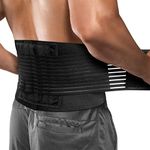Buying Guide for the Best Back Support Braces
When choosing a back support brace, it's important to consider your specific needs and the activities you plan to engage in while wearing the brace. Back support braces can help alleviate pain, provide support during physical activities, and aid in recovery from injuries. Understanding the key specifications will help you select a brace that offers the right level of support and comfort for your situation.Support LevelThe support level of a back brace indicates how much stabilization it provides to your spine and surrounding muscles. This is important because different conditions and activities require varying levels of support. Support levels can generally be categorized into light, moderate, and firm. Light support is suitable for minor aches and preventative measures, moderate support is ideal for more significant discomfort or during physical activities, and firm support is best for serious injuries or post-surgery recovery. Choose a support level based on the severity of your condition and the type of activities you will be performing.
MaterialThe material of a back support brace affects its comfort, breathability, and durability. Common materials include neoprene, elastic, and cotton blends. Neoprene offers good support and warmth, which can be beneficial for muscle relaxation, but may not be as breathable. Elastic materials provide flexibility and are often more breathable, making them suitable for extended wear. Cotton blends are comfortable and breathable, ideal for sensitive skin. Consider your comfort preferences, any skin sensitivities, and the climate in which you'll be wearing the brace when selecting the material.
AdjustabilityAdjustability refers to how easily you can modify the fit and compression of the brace. This is crucial for ensuring the brace provides the right amount of support without being too tight or too loose. Look for braces with adjustable straps or Velcro closures, which allow you to customize the fit to your body shape and size. If you anticipate changes in your condition or body size, such as during weight loss or gain, a highly adjustable brace can be particularly beneficial.
Size and FitThe size and fit of a back support brace are critical for its effectiveness. A brace that is too small may restrict movement and circulation, while one that is too large may not provide adequate support. Most manufacturers provide sizing charts based on waist or hip measurements, so it's important to measure yourself accurately before purchasing. Consider whether you will wear the brace over or under clothing, as this can affect the size you need. A well-fitting brace should feel snug but comfortable, allowing for a full range of motion.
Design and FeaturesThe design and additional features of a back support brace can enhance its functionality and comfort. Some braces come with lumbar pads for extra support, while others may have breathable mesh panels for improved ventilation. There are also braces designed for specific activities, such as sports or heavy lifting, which may include features like reinforced support or moisture-wicking materials. Consider what additional features might benefit your specific needs and lifestyle when choosing a design.
